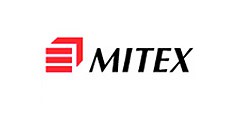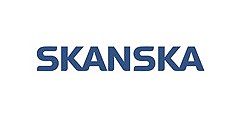Building materials
Cement
Distribution of cement in Poland and abroad is managed by JD company based in Opole. The company has signed distribution agreements with 8 cement plants. The offer includes Portland, multicomponent and metallurgical cements, as well as stabilization binder.
All cements are manufactured in cement plants under the control of independent research institutes, and have the appropriate certificates allowing them to be used in construction.
JD offers bulk and bagged cement (with delivery to desired place or possibility receive with customer's transport methods). To meet customer requirements, the JD company systematically complements the range of products offered. In addition to cement, Company also offers well hydrated lime and autoclaved aerated concrete "M" and "D" blocks with class of 500, 600 and 700.
JD activities involves distribution of building materials to the customers, which are: institutional buyers, batching plants, building warehouses, manufacturers of adhesives and mortars, manufacturers of concrete goods and retail chains.
JD Company highly values the importance of long-term contracts and cooperation with customers. Therefore, delivery to our clients are carried out within 24 hours, with the highest quality of products and services.
Portland cements >
Portland clinker with addition of gypsum (bond time regulator) the Portland CEM I cement is obtained. It is characterized by high early and final durability (depending on strength classes) and high hydration heat which is not recommended when concreting very large elements.
It can be used for almost all cement exposure classes with the exception of: XA2 and XA3 where the HSR sulphate-resistant cements should be used.
- CEM I 42,5 N
- CEM I 42,5 N-NA
- CEM I 42,5 R
- CEM I 42,5 R-NA
- CEM I 52,5 R
- CEM I 52,5 N-NA
Multi component portland cements >
The CEM II Portland multicomponent cements are obtained by grinding Portland clinker, gypsum and mineral additives.
These additives can be:
- granulated blast furnace slag – mark (S),
- siliceous dust – mark (D),
- natural pozzolan – mark (P),
- artificial pozzolan – mark (Q),
- siliceous fly ash – mark (V),
- lime ash – mark (W),
- burnt slate – mark (T),
- limestone – mark (L).
Content of mineral supplements in the CEM II cements can be between 6 and 35%. Depending on the maximum quantity of additives, two varieties of the CEM II multicomponent Portland cements can be singled out
variety A – the total amount of mineral additives is between 6 and 20%,
variety B – the total amount of mineral additives is between 21 and 35%.
- CEM II/A-LL 32,5 R
- CEM II/A-LL 42,5 N
- CEM II/A-LL 42,5 N (ez)
- CEM II/A-LL 42,5 R
- CEM II/A-M (S-LL) 52,5 N
- CEM II/A-M (S-LL) 52,5 R
- CEM II/A-M (V-LL) 52,5 N
- CEM II/A-S 52,5 R
- CEM II/A-V 42,5 R
- CEM II/A-V 42,5 R-NA
- CEM II/B-M (S-V) 42,5 N
- CEM II/B-M (V-LL) 32,5 R
- CEM II/B-S 32,5 R-NA
- CEM II/B-S 42,5 N-NA
- CEM II/B-S 42,5 R-NA
- CEM II/B-S 52,5 N
- CEM II/B-V 32,5 R
- CEM II/B-V 32,5 R-HSR
- CEM II/B-V 32,5 R-HSR/NA
- CEM II/B-V 42,5 N
- CEM II/B-V 42,5 R-HSR
- CEM II/B-V 42,5 R-HSR/NA
- CEM IV/B (V) 32,5 N
- CEM IV/B (V) 42,5 N-LH/NA
- CEM V/A (S-V) 42,5 N-LH/HSR/NA
Metallurgical cements >
In case of addition of blast furnace slag in amount above 35%, the CEM III metallurgical cements are obtained. They are manufactured in two varieties, depending on maximum content of blast furnace slag added:
- CEM III/A is a blast furnace cement with content of slag between 36 and 65%.
- CEM III/B is blast furnace cement with content of slag between 66 and 80%.
Metallurgical cements are characterized by low hydration heat so that they are suitable for the construction of large concrete elements or hydraulic engineering facilities, bridges and roads. They can be used in concretes that are applied in foundations, basement walls, wall slots, water dams, marine objects or sewage treatment plants.
These low-alkaline cements have high sulfate resistance and are characterized by low permeability. They should not be used in winter period because of low level of hydration heat. They have very good dynamic of endurance growth in long hardening period – even to over a dozen months. They are manufactured in two endurance classes: 32,5 and 42,5.
ATTENTION!
Metallurgical cements as the only ones are manufactured in three varieties of early compressive strength: high (R), normal (N), low (L). Other types of cements are manufactured in two early compressive.
- CEM III/A 32,5 N-LH (na)
- CEM III/A 42,5 N
- CEM III/A 42,5 N (na)
- CEM III/A 42,5 N-LH (na)
- CEM III/A 42,5 N-LH/HSR/NA
- CEM III/A 42,5 N-LH/SR/LA
- CEM III/B 42,5 L-LH/SR (na)
Special cements >
Cement with low hydration heat (LH) – it’s a cement with hydration heat below 270 J/g after 7 days of hydration (marked by heat of solution method). These elements includes: metallurgical cements CEM III and pozzolanic CEM IV with high content of slag and ash. They are used for big massive constructions. Low hydration heat allows you to avoid of micro-cracks and cracks that leads to reduction of concrete durability.
Cement with high sulfur resistance (HSR) – it’s a cement with high resistance on aggressive chemical environment. This cement is used in concretes qualified to following exposition classes: XA2 and XA3.
Low-alkaline cement (NA) is used when reaction alkali – reactive aggregate silica can occur. Nascent alkaline-silicone gel has tendency to increase of its volume (swell) under the influence of water and to demolish concrete structure. Reactivity symptoms can be white efflorescence, Surface scratches, funnel splashes and even complete destruction of concrete as result of its crushing. It means that in concretes that after incorporation will be exposed on damps necessary is use of low-alkaline cements. It concerns among others bridge and road constructions. To low-alkaline cements you can classify cement from CEM I to CEM IV that contains less than 0,6% of alkali.
Alumina cement – it’s quickly hardening hydraulic binder obtained from clay clinker made of limestone and bauxite. Alumina cement are characterized by very quick dynamic of initial endurance growth, however during hardening process it secretes a lot of heat. Because of that it can be used when concreting during winter period even with temperature of -10°C, however this binder is expensive.
White cement – it contains calcium silicates. White cement is used in process of manufacture of architectonic concrete and ornate concrete gallantry. It’s manufactured in all strength classes.
- CEM I 42,5 N (sd)
- CEM I 52,5 N (bs) 3
- CEM I 52,5 N (ft)
- CEM I 52,5 N-SR 3
- CEM I 52,5 R (fc)
- CEM I 52,5 R (ft)





